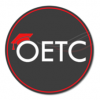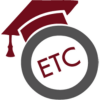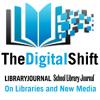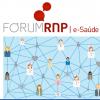In today's news we look at an OSUM professor opening the door to supercomputing for a Marion County student, Ohio State's President Michael Drake is sworn in as the universities 15th president, the US telecoms industry is speeding up with the help of Google Fiber, tech giants battle for classrooms in Amish country, and Cards Against Humanity has released a science card pack whose sales will go towards scholarship for women in STEM...
Recent posts
In today's news we look at a new STEM school to open on the campus of Youngstown State University, three Ohio cases where students revealed test questions to others online, Internet outages revealing gaps in the US broadband insfrastructure, EBSCO companies acquiring companies in New Hampshire and New Jersey, and Petroleum Geo-Services now has one of the largest supercomputers in the oil and gas industry...
In today's news we look at Downtown Dayton receiving gigabit fiber, Ohio State professors teaming up with startups to promote technology, Honda announcing a new program to boost interest in manufacturing, STEM students using a driving simulator, and supercomputers giving universities a competitive edge...
In today's news we look at parents being concerned with student privacy issues on Common Core tests, testing drones for prison security being put on hold in Ohio, Ohio State University faculty members fighting for the rights to their work, Obama announcing $240 million for STEM education, and the leading library ebook distributor OverDrive being sold to Rakuten...
Ed.—In June 2014, OARnet and the State of Ohio announced an agreement to have OARnet provide the network backbone for the State and its various agencies. By moving to OARnet’s 100 Gigabit-per-second backbone, the State is able to streamline its services, while K-12, Higher Education and all other client sectors, including the state, will benefit from increased aggregate purchasing power.
This Saturday, March 14, otherwise denoted as 3.14, the mathematically minded people of the world will celebrate Pi Day, in honor of the famously irrational number calculated by dividing the circumference of a circle by its diameter: 3.1415926535897932384626433832795028841971... (the digits never end or repeat in any known way).
In today's summary, read about Chattanooga and the University of Tennessee at Chattanooga connecting to GENI, in partnership with US Ignite and the Enterprise Center; Central Michigan University cutting 10 percent of its subscriptions to academic journals and databases; EBSCO acquiring YBP Library Services; the top 6 predictions for HPC this year; an opinion on how supercomputing enables innovation; and an IBM initiative to teach big data and cloud technologies.
In today's news we look at the state of Ohio not taking the money from school districts for students whose parents let them skip standardized tests, a study done by Kent State University that links high smartphone use with low GPA, the new net neutrality rules that may help Europe take the lead in broadband, education technology funding jumping 55 percent in 2014, and a supercomputer that is on a pay-per-use basis...
The beanbag chairs, microwaves, walkstation – think a treadmill with a standing desk – and the companion bikestation added to the Kent State University Libraries this year may seem inconsequential to some.
But for students at Kent State, these extras make the space more comfortable, and, therefore, more enticing to use.
In today's news we look at Kasich's State of State address, Ohio STEM students participating in National Engineer's Week, UC to renovate a former Sears for innovation center, proposed legislation that would reduce tuition at Ohio public colleges by 5 percent, and and undergraduate OSC researcher heading to the UK...
As an educator, I feel that it is important to help young people develop an understanding and appreciation of science and technology. It is also important that all students should be introduced to STEM (Science, Technology, Engineering, and Math) careers. Yet the U.S. Census Bureau reports that women remain underrepresented in STEM fields, particularly in computer science and engineering occupations. If we are to increase the number of women in STEM fields then we should make sure that girls are given ample opportunities to explore science and technology.
The Ohio Educational Technology Conference (OETC) 2015 wrapped up three days of interesting speeches, workshops and displays last week, despite the cold temperatures in Central Ohio.

Throughout the State of Ohio, students are able to access college courses – and earn credit for them – while still in high school. This recently revamped program, renamed College Credit Plus, is designed to bolster students’ college readiness, lower their cost for higher education and improve their retention and success in college.
Today's news looks at online students wanting more interaction with instructors, the University of Cincinnati teaming with NASA, New Mexico University accessing a powerful supercomputer, Obama reversing his decision on his college savings plan, and the FCC's net-neutrality benefiting from a change in legal justification...
There is no denying the extreme impact technology is having on our nation’s education system. A growing number of schools leverage the latest advancements in technology to create innovative and adaptable learning environments for their students. Ohio’s students, as a result of this trend, are well equipped with the technological literacy needed to enter the 21st century workforce.
Greg Harmon, of Dragonfly Capital, recently opened an investment blog post with an angle that caught my eye:
“Looking for that gift for the nerd that has everything? Well how about a supercomputer? These babies have the power of 50 million laptops. That should get them an edge playing Xbox against their friends.”
Harmon made a quick pivot and went on to pitch giving “the thrill of supercomputing” by making presents of supercomputer stock from companies, such as Cray.
Julia Chance Gustafson has been at the forefront of major changes in librarianship since arriving at the College of Wooster on Feb. 1, 1982.
Currently a research and outreach librarian, Julia started her career as a reference librarian, with responsibilities for coordinating the College of Wooster’s library instruction program. Since then, Julia worked as an electronic services librarian and access services librarian.
In today's news we look at a bill that will help military students who are pursuing a degree in one of the STEM fields, the University of Chicago to host Barack Obama's presidential library, the IARPA funding an even more powerful supercomputer, central Ohio students taking part in the Hour of Code campaign, and a look at the growing demand for technology skills.
Today's news looks at using a supercomputer to find a cure for Ebola, schools allowing computer science to count for graduation requirements, using the acronym STEAM instead of STEM, Southern Ohio schools benefiting from a learning grant, and Cleveland getting a 100-gigabit broadband network backbone.
Today's news looks at IBM's supercomputer being used for an app to give dieting advice, students being less interested in becoming STEM teachers, Ohio's manufacturing gaining jobs for the third year in a row, Ohio's public colleges being more selective, and veterans being able to earn a degree for free from Coursera.
The active librarian community in Ohio shouldn’t surprise me anymore, but it still does when I discover yet another local group or event dedicated to a niche aspect of libraries. Ohio IR Day on Friday, October 24, 2014, exemplified the communal desires of Ohio librarians. Even , there were over 30 participants for this all-day event, most from academic libraries with one from the Ohio History Connection (previously the Historical Society) and even a Kentucky librarian
Ask college librarians how prepared they think incoming freshmen are for college-level work, and their answers are sadly consistent: today’s students aren’t prepared. Bridging that gap is a common interest for OhioLINK, Ohio’s academic library consortium, and INFOhio, Ohio’s PreK-12 digital library. Drawing on their 20-year history of working together–along with public libraries and the State Library of Ohio–to cost-effectively provide research resources to all Ohioans, OhioLINK and INFOhio are now investigating the next step. Using a common tool–EDS–but two different approaches, OhioLINK and INFOhio are transforming research with search and discovery and helping ease the transition to college for Ohio’s students.
Today we look at the world's largest telecommunications equipment maker placing more focus on broadband expansion, the number of student loans in default declining, online learning efforts through the University of Florida, Australia's new supercomputer, Youngstown's STEM school, and Harvard-MIT partnering to offer high school students online courses...
Today's Digest focuses on the University of Virginia's new computing cluster and big data research, STEM jobs open for Women in South Carolina, startup founders applying educational experiences, University of Arkansas' diverse freshman class in the college of engineering, and Hilliard, OH looking to bring in an Amazon data center...
The staff of the Ohio Academic Resources Network (OARnet), a member of the Ohio Technology Consortium (OH-TECH), has been working with their counterparts at The Ohio State University to deploy a Science DMZ to help accelerate research at the university. A Science DMZ is a computer sub-network that is structured to be secure, but operates outside of the performance restrictions of a firewall. The two-year funding for the project comes from the National Science Foundation’s Campus Cyberinfrastructure – Network Infrastructure and Engineering Program (CC-NIE) program.
- ‹ previous
- 5 of 11
- next ›














































